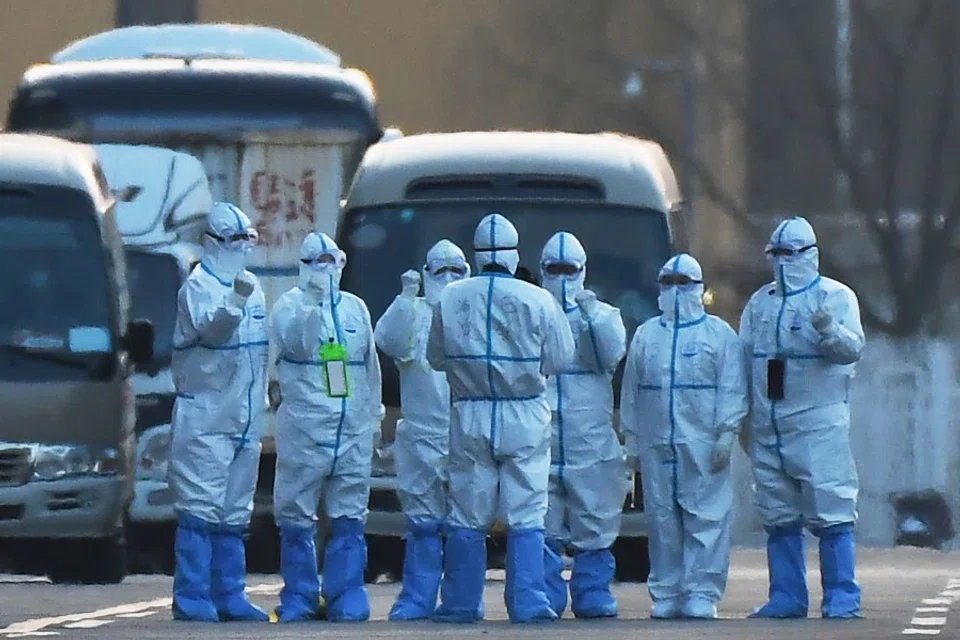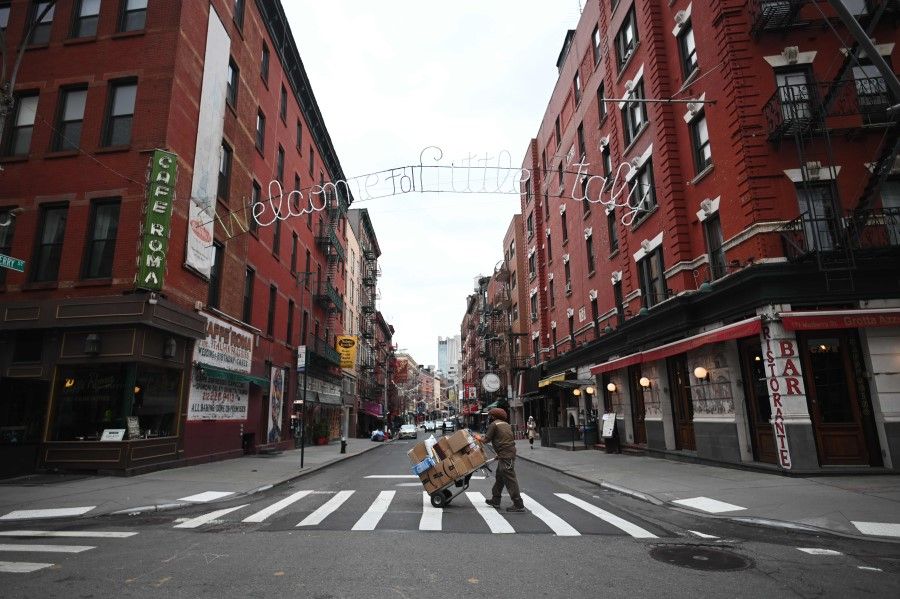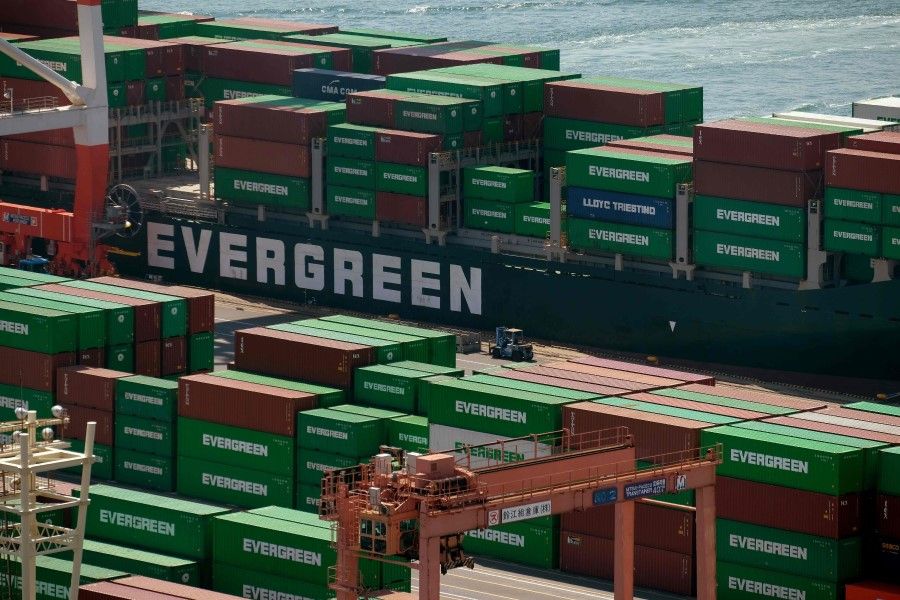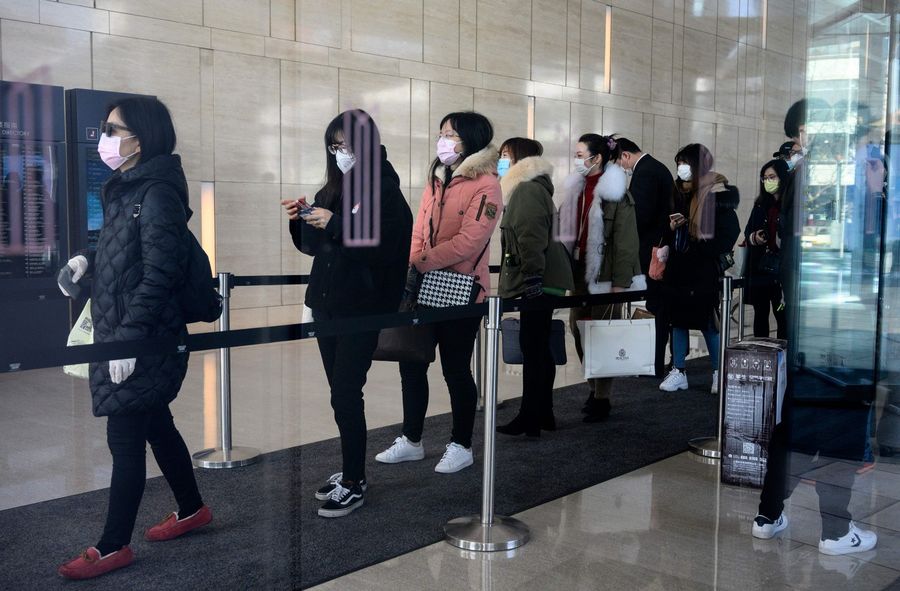From supply chain to BRI, a super-connected China impacts the world

Whether in terms of economy and society, or in terms of global impact, the effect of the Covid-19 epidemic on China and the world is much worse than the 2003 SARS outbreak. Chinese President Xi Jinping admitted that Covid-19 is the "fastest-spreading, widest-reaching, and most difficult to contain" public health crisis since the establishment of the People's Republic of China. And while China has taken comprehensive measures to control the outbreak, which looks to be on the path of being reined in, there is still a hard fight ahead against the epidemic.
In a connected age of globalisation, something that should not be globalised has been globalised.
At the same time, the epidemic is worsening around the world. The virus has spread globally, with numbers rapidly increasing outside of China. In Asia, South Korea has the next highest number of confirmed cases apart from China, with president Moon Jae-in declaring a "red alert". In the Middle East, Iran's numbers are also rising quickly and spreading to other countries in the region. In Europe, Italy is the worst-hit country, with confirmed cases and deaths going up fast, with over 35,000 confirmed cases and a little over 2,900 deaths reported as of 19 March. To stop the spread, Italy became the first country in the world to implement a national lockdown, as announced by Prime Minister Giuseppe Conte, effective from 10 March, with no one allowed to leave their residences except for work or medical treatment.
As of 19 March, the epidemic has spread from Wuhan to over 150 countries and regions, with more than 200,000 confirmed cases and over 8,900 deaths. The fact is, it has exploded around the globe. In a connected age of globalisation, something that should not be globalised has been globalised.
China has had two virus outbreaks that went out of control due to human factors, proving that China has not yet established a transparent modern public health management system and crisis response system, much less being able to "modernise its national governance system and capabilities".

When the coronavirus first broke out in December 2019, some doctors in China discussed the situation on social media, reminding people of the potential risk that it might become an epidemic, only to be silenced by the police - with no medical background at all - and made to sign a letter that they would stop spreading rumours. One of them, Dr Li Wenliang, died of the illness. Punishing the professionals who told the truth, slow response by local authorities, inaction by the authorities in charge of public health, and mass misinformation by the Chinese media led to a missed opportunity of over a month to control the epidemic. Due to the epidemic, China and the world have paid an inestimable economic and social price.
China's current system is able to mobilise domestic resources, whatever it takes, to control the epidemic. In China's jargon, this is "bringing the country together to do great things". Ironically, in this opaque system where politics and maintaining stability is everything, a national disaster caused by intentional concealment of the facts cannot be avoided. Not to forget that SARS happened in 2003, just 17 years ago; during that short time, China has had two virus outbreaks that went out of control due to human factors, proving that China has not yet established a transparent modern public health management system and crisis response system, much less being able to "modernise its national governance system and capabilities".
Pandemic forcing China to shift inwards
The epidemic has worsened the already slowing Chinese economy, especially service industries such as food and beverage, hospitality and tourism, entertainment, and transport. Streets and open spaces are empty and silent, as China's major cities become veritable "ghost towns". Production has been halted or reduced - China's National Bureau of Statistics announced that the Purchasing Managers' Index (PMI) fell to a record low of 35.7 in February, 14.3 percentage points lower than in January. If this "barometer" of economic growth and industry development falls below 50%, the economy and manufacturing industry are in a recession.
The Chinese government and the entire civil service have been made to shift their focus and policies inwards and give priority to handling the epidemic...
Unlike previously, China's economy is currently driven mainly by domestic consumption, which accounted for 76% of its economic growth in 2018. With the epidemic, China's economy is at a standstill. A slide in 2020 is unavoidable, probably to around 5%. Many international organisations, including the International Monetary Fund (IMF), have revised downwards their forecasts of China's economic growth for 2020-2021.
China is now in "whole of government" (全政府) and "whole of society" (全社会) mode, mobilising all resources and the military to combat the epidemic. The Chinese government and the entire civil service have been made to shift their focus and policies inwards and give priority to handling the epidemic, and its impact on society, the economy, and people's lives. China's diplomats are busy explaining and publicising China's epidemic efforts to other countries, hoping to gain confidence from others that China will bring the epidemic under control in the end.
According to the 2019 "China and the World" report by McKinsey Global Institute, China is the largest export destination for 33 countries, and the largest source of imports for 63 countries.
China's financial institutions are shifting limited funds to businesses and individuals in China as a priority. According to figures from China's Banking and Insurance Regulatory Commission released in February this year, in less than a month between 26 January and 14 February, China's banks and other financial institutions have released as much as 537 billion RMB in low-interest loans. To stabilise the financial market and provide the cash flow that companies need, China's financial institutions will have to give flexible credit loans to tens of thousands of affected companies for quite some time, so that they will be able to handle the pressure of debt and a lack of cash flow.
China and the global industrial chain under the epidemic
Today, China holds an important place in the world economy and global industrial chain. China and the world are connected as never before, and China is now a key driver of global trade growth. In 2003, China represented just 6% of global trade. This percentage went up to 12% in 2018, when its external trade hit US$4.6 trillion and its economy represented over 16% of global GDP, making it the largest trading country in the world. According to the 2019 China and the World report by McKinsey Global Institute, China is the largest export destination for 33 countries, and the largest source of imports for 63 countries. The epidemic has not only affected China's economy, but is also impacting the world economy, and the normal operations of the global industrial and supply chain.

China has become the most important manufacturing country in the world, with the most comprehensive industry types and competitive production capabilities. China is a key part of the global industrial and supply chain, with many industries highly dependent on China's supply chain. For example, China is an industrial chain leader in electronics and communications, automobile manufacturing, mechanical equipment production, and clothing. At the same time, China is also an important consumer market of these finished products. Between 2015 and 2017, China was the second largest investment destination in the world, and 80% of the world's top 500 multinational companies now have operations in China. "Made in China" products are prominent in malls and on supermarket shelves around the world.
The epidemic has led many countries to reconsider the risks of being over-reliant on China, and China's core position in the global industrial chain.
The provinces that have been hit worst by Covid-19, such as Guangdong, Henan, Zhejiang, and Jiangsu, are not only major economic provinces, but also the areas most involved in the global supply chain. Chinese companies, especially small- and medium-sized enterprises, are facing challenges such as increased tariffs from the US, the China-US trade war, production stoppages, halt in supply of raw materials, and difficulty in resuming production. It will take quite a while to bring production back to pre-pandemic levels. A stop in China's factories will hinder the workings of the global industrial and supply chain, or even cause a break, and lead to a domino effect on the world economy. A halt in production for China's businesses would directly affect the textile industry in Cambodia and Vietnam, the drug manufacturing industry in India, the clothing industry in Turkey, and the automobile industry in South Korea and France, and cause the production line to shrink or halt. The more dependent global industries are on China as a supply chain or consumer market, the greater the impact.
The epidemic has led many countries to reconsider the risks of being over-reliant on China, and China's core position in the global industrial chain. On 21 February, French Minister of the Economy and Finance Bruno Le Maire said the epidemic shows the "irresponsible and unreasonable" international reliance on China, and the global supply relationship has to be reconsidered to reduce reliance on China, especially in automobiles and medicine.
Wuhan and Hubei are popular places for French industries to invest in, and where French companies are concentrated. Citroen, Renault, Schneider Electric, Alstom, and the Suez Group have large investments in the area. No wonder French companies and factories in China have been hardest hit by the epidemic.
Few countries can compete with China in terms of production capacity, adequacy of supporting facilities, product quality and stability, labour quality and domestic security.

Since China joined the World Trade Organisation in 2002, it has gradually established a strong global industrial competitive advantage. It contributed over 35% of the world's manufacturing output, and has lived up to its name as "the world's factory". However, having been dealt a big blow by the Covid-19 pandemic, China's competitive edge is weakening. The outbreak demonstrated the vulnerability of a global supply chain that heavily relied on China, and multinational corporations have since cast doubt on the stability and reliability of the "Made in China" label. America's Apple even said that the factory shutdowns of its Chinese manufacturers will affect global iPhone supplies.
An increasing number of multinational corporations have begun re-evaluating the importance of diversifying their supply chains to avoid putting all their eggs in one basket, in turn hastening the dispersion and reorganisation of global supply chains. The Covid-19 pandemic would thus become an important turning point of this restructuring process, as the worsening outbreak would prompt general manufacturing industries to quickly shift their supply chains elsewhere, especially to the Southeast Asia and South Asia regions. On 27 February, the American Chamber of Commerce in the People's Republic of China published a report on the impacts of the Covid-19 pandemic based on responses collected from 169 companies between 17-20 February. One-third of the respondents revealed that they will pull out of China if factories remain closed.
In spite of this, relocating their supply chains out of China is easier said than done. The process would take at least two to three years, not to mention the exorbitant cost of doing so. Few countries can compete with China in terms of production capacity, adequacy of supporting facilities, product quality and stability, labour quality and domestic security. In the face of the global spread of the pandemic, where would multinational corporations shift their supply chains to?
Impact on the Belt and Road Initiative (BRI)*
China's top officials have focused their efforts within the country, first tackling the various areas affected by the pandemic. In this situation, BRI efforts have inevitably slowed down. The pandemic affects the BRI in two ways: firstly, the shutdown of domestic factories limits the purchasing of raw materials and equipment required by projects under construction. Additionally, some enterprises that have resumed operations were also ordered to change their production capacities, prioritising the production of medical supplies urgently needed to fight the virus instead.
Taking the example of Southeast Asia countries, Indonesia's Jakarta-Bandung high-speed rail project and Laos' China-Laos railway project are representative projects of the BRI that China is attempting to advance, with many Chinese enterprises and engineers involved in construction works. This is because both countries lack relevant experience in construction of massive railways, and do not have enough engineers with relevant expertise. Both countries also lack domestic enterprises with the competitive edge to participate in the construction of these railways, thus relying on Chinese manufacturers and factories for raw materials, project facilities, auto parts, supporting products for automobiles, automobile signals, and safety operation control systems.
...relevant BRI diplomatic and trade activities that China has taken towards the international community has come to a standstill, and all BRI-related meetings, pitchings, project biddings, construction works, and staff training have been postponed.

Although the Chinese authorities have asked manufacturers to resume work in compliance with preventive measures, it is still a tall order for companies to get their operation back up to speed while ensuring that their workers do not get infected. They are not only short on mask supplies for existing workers, but also faced with the delays of returning workers from abroad having to first undergo a 14-day quarantine. Moreover, with a shortage of raw materials and logistical challenges, resuming operations to the standards prior to the outbreak is a difficult task.
Secondly, various countries have also imposed restrictions on human mobility, affecting the Chinese engineers' return to work at various overseas BRI project sites after the Lunar New Year, in turn delaying the progress of relevant projects. Worried about the spread of Covid-19, many countries have imposed travel bans or restrictions on Chinese citizens, with at least 30 airlines reducing or even suspending flights to China. In fact, these preventive measures have gradually alienated China, implying that relevant BRI diplomatic and trade activities that China has taken towards the international community has come to a standstill, and all BRI-related meetings, pitches, bidding for projects, construction work, and staff training have been postponed. According to foreign investment statistics released by China's Ministry of Commerce in February, Chinese enterprises' non-financial foreign direct investments amounted to US$8.3 billion in January 2020, a 9.5% decrease year-on-year.
The BRI relates to the sustainability of China's economic and industrial development, and also determines if it can ultimately rise to become a global power.

The pandemic has clearly upset BRI's implementation, and created major short-term impacts. At the press conference of the State Council Information Office on 5 March, China's Vice Minister of Foreign Affairs Ma Zhaoxu admitted that Covid-19 has affected BRI's implementation. It seems that the extent of this impact is dependent on how long China takes to effectively contain the outbreak. As the outbreak's global spread is still in its beginning phases, it is still too early to give a comprehensive evaluation of the extent of its impact on the BRI.
Nonetheless, regardless of the challenges faced by the BRI as a result of the pandemic, China's determination to advance the BRI will not be shaken. While some BRI projects will be affected and their dates of completion will be postponed, these projects will not be cancelled. In tactical terms, China needs to tighten the high cost of the BRI. In strategic terms, however, China's great ambition in pushing for the BRI will not be dampened. The BRI relates to the sustainability of China's economic and industrial development, and also determines if it can ultimately rise to become a global power.
An "interconnected" outbreak
The Lowy Institute Asia Power Index analyses the economic resources, diplomatic influence, and economic relationships, among other indicators, of 25 Asian countries. In its 2019 edition, China, Japan, Singapore, Korea, Thailand, and Malaysia emerged among the top of the list. These top countries boast high regional connectivity and openness, but they are also the ones more badly affected by the outbreak.

Amid the outbreak and its spread, countries with a high degree of openness and connectivity are especially vulnerable and have a high risk of increasing their infection rates through imported cases. While it is not feasible to lock down and isolate countries completely in the era of globalisation, countries around the world have to evaluate the cross-border challenges and the risks that "interconnectedness" brings in, collaborating to implement effective measures against the spread of the pandemic.
The main reason for the quick escalation of the virus from its epicentre of Wuhan to the rest of China and abroad is that Wuhan is the transportation hub of central China, so-named the "thoroughfare to nine provinces" (九省通衢). Additionally, there are also regular direct flights between Wuhan and multiple countries overseas. Viruses disregard national borders and can quickly spread to a multitude of other countries.
Combating the Covid-19 pandemic is no longer just China's problem, but the problem of the entire world. The convenience of cross-border travel has made it convenient for viruses to spread, thus increasing the possibility of cross-border outbreaks of infectious diseases. Just like there are two sides to a coin, "interconnectedness" is imperfect. Things that should not be "interconnected", like viruses, are becoming "interconnected" with advancements in transportation facilities.
Note:
*First proposed by President Xi Jinping in 2013, the Belt and Road Initiative aims to promote economic growth, peace and development for the peoples of Asia, Europe and Africa. This is envisioned to be achieved through the revival of land and sea links as intricately woven and far-reaching as the flourishing trade days of the old Silk Road. Trade, connectivity, infrastructure-building, financial integration, the movement of people and policy exchange are some of the focus areas detailed in the 2015 action plan.
Related Readings: Restoring global supply chains at 'the speed of China' | The most likely outcome of the BRI | Covid-19: Can the global economy operate without China? [Part One] | Covid-19: Can the global economy operate without China? [Part Two] | Let us be worried, even when we overcome this virus
